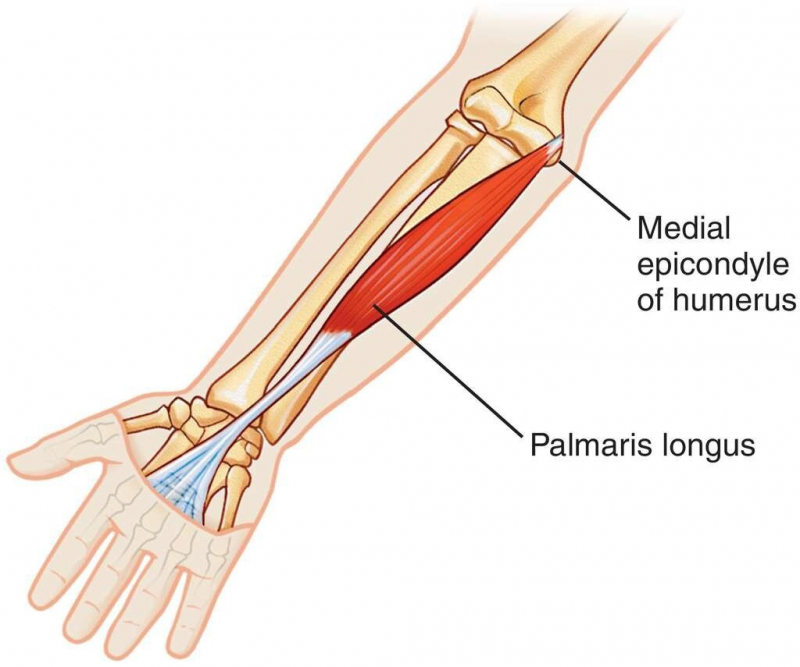Palmaris Longus Muscle
According to research, 10% of people lack the palmaris longus muscle, which is a little strip of muscle that runs from the wrist to the elbow in both arms. This muscle most likely had a gripping function, with lots of researchers believing that it was of particular importance for hanging. However, the lack of muscle has no effect on grip strength in modern humans.
According to the evolutionary explanation for the muscle's absence, many species with which humans share a common ancestor (such as the orangutan) still actively use the muscle. Close relatives of humans, such as chimpanzees and gorillas, also exhibit the same variability since they do not actively use their muscles. Moreover, according to the common descent theory, our ancestors may have used the muscle intensively in the past. The palmaris longus muscle started to become vestigial as the hominin branch's thumb apparatus (and specifically the thenar muscle group) began to grow. The muscle has remained substantially unaltered by evolutionary processes as there is no obvious evolutionary pressure (positive or negative) pertaining to it.
Today, the palmaris longus muscle is commonly harvested as a source of tissue for tendon grafting in reconstructive surgery. If you want to know whether you are of 10% of human beings that don't have this muscle, you can test yourself with the instruction in the video below.










